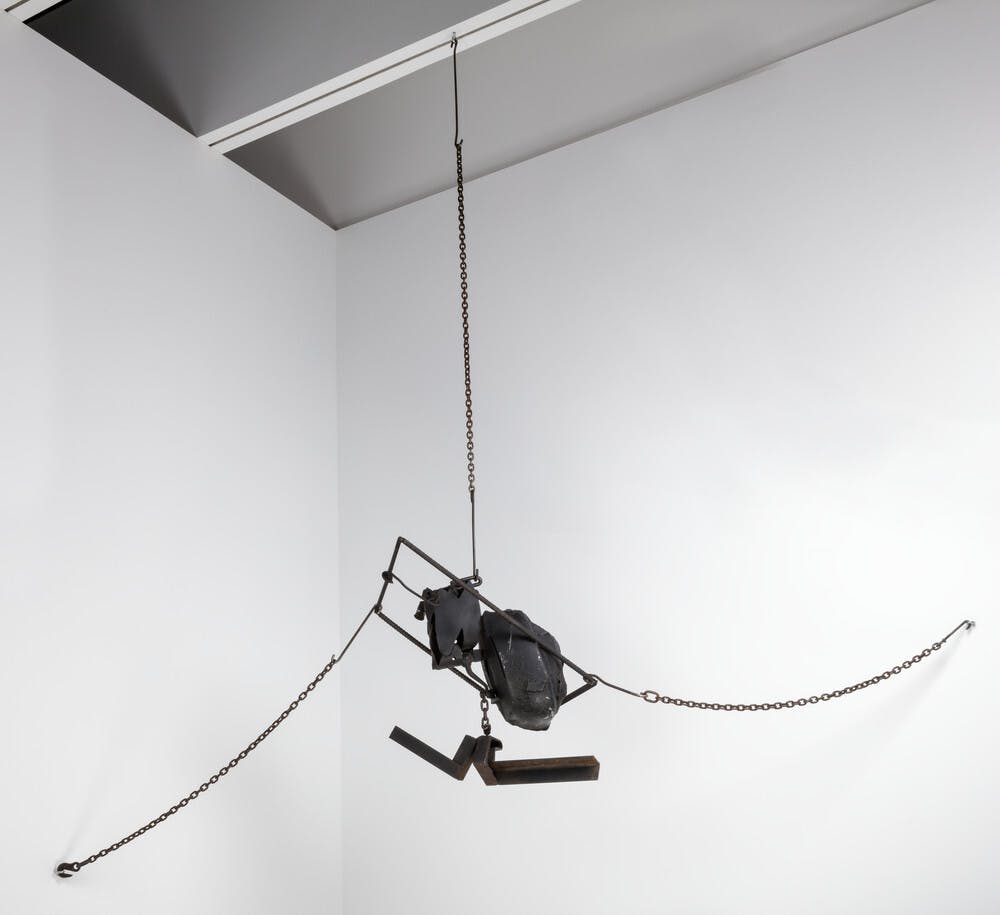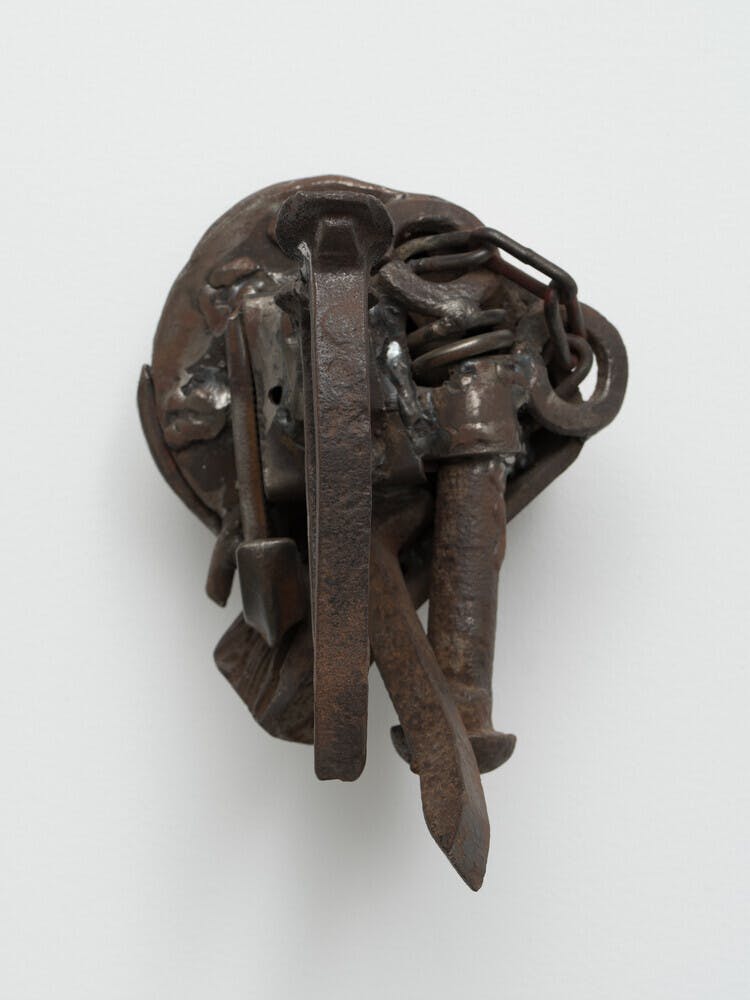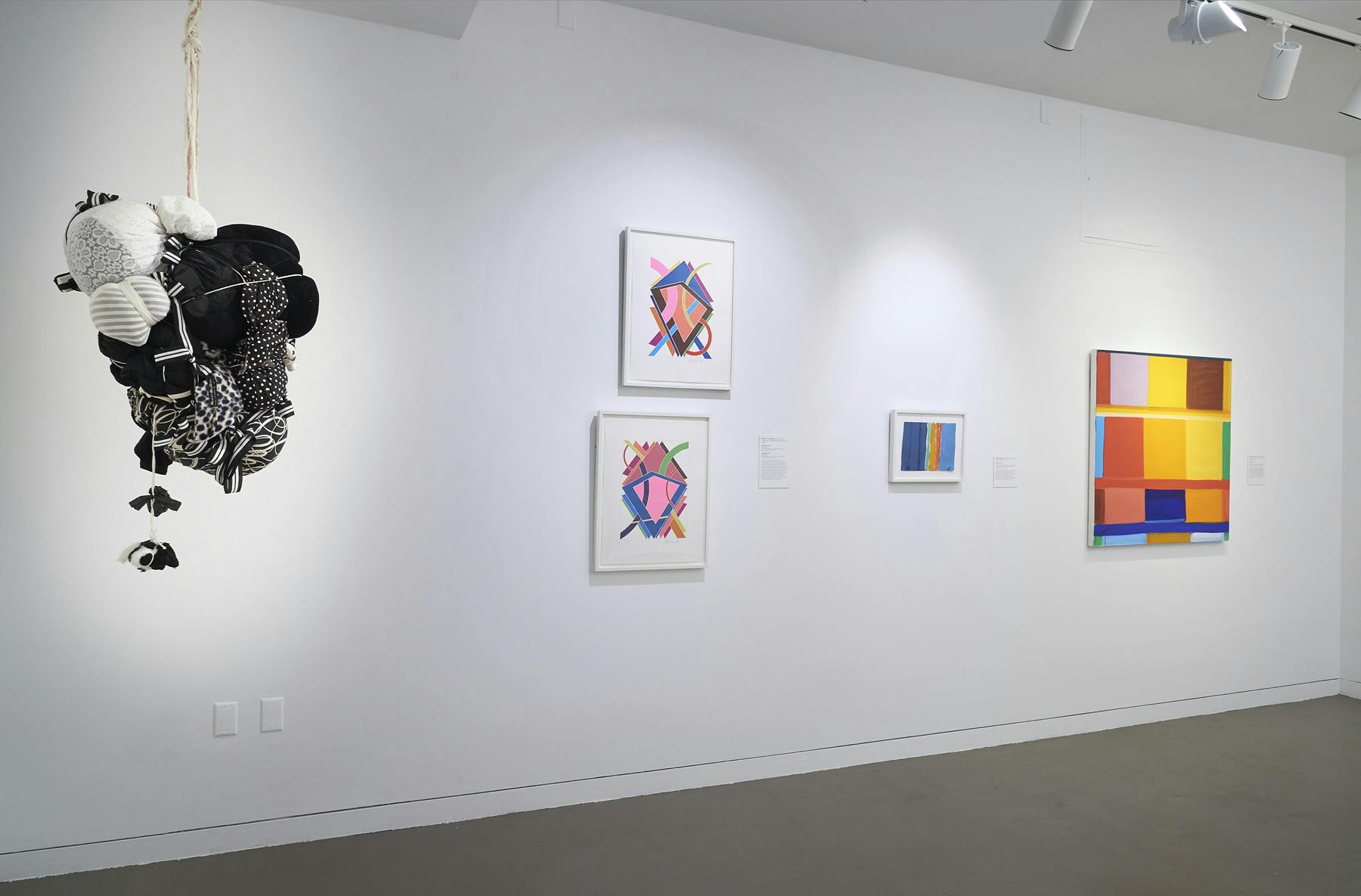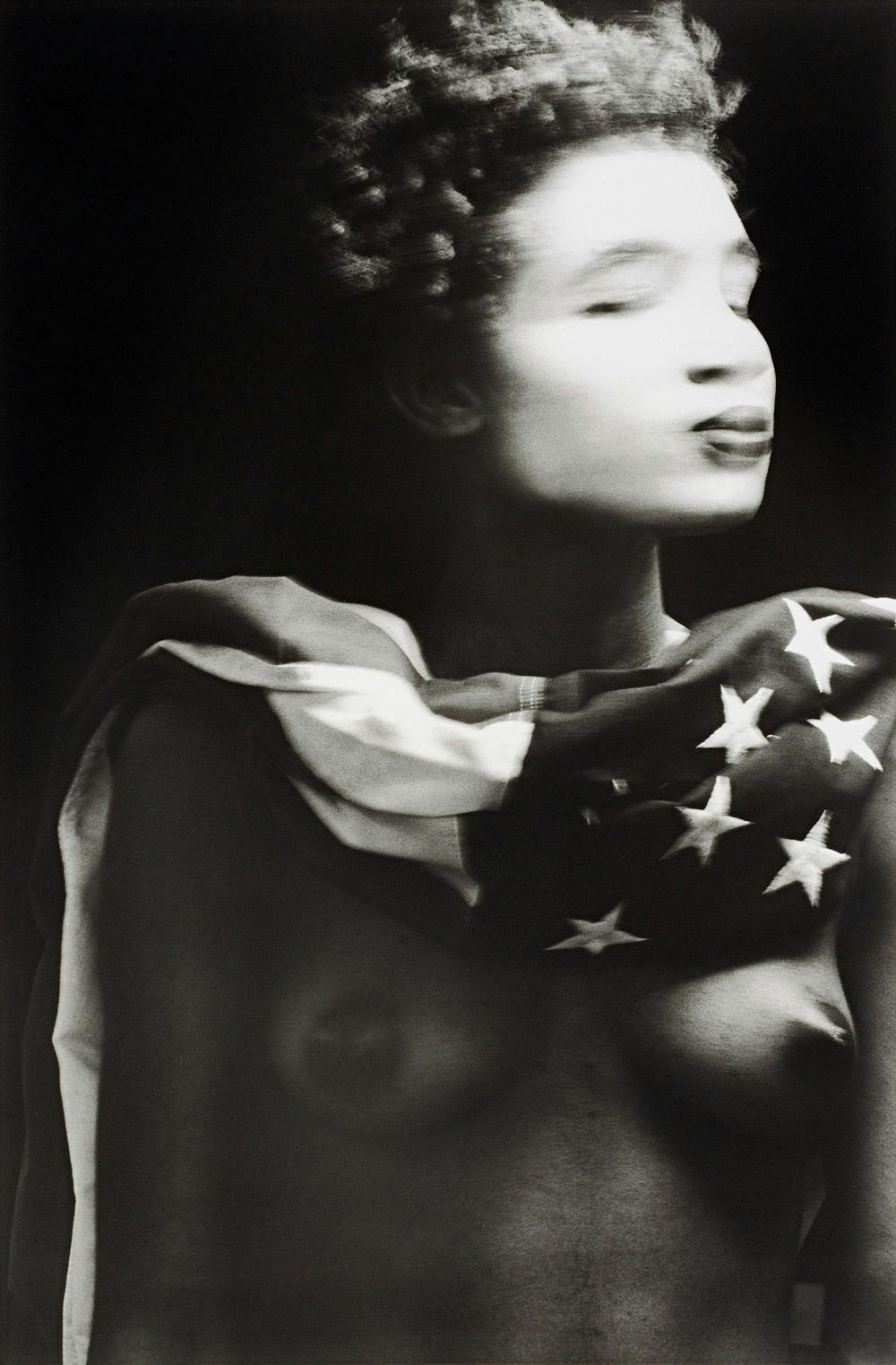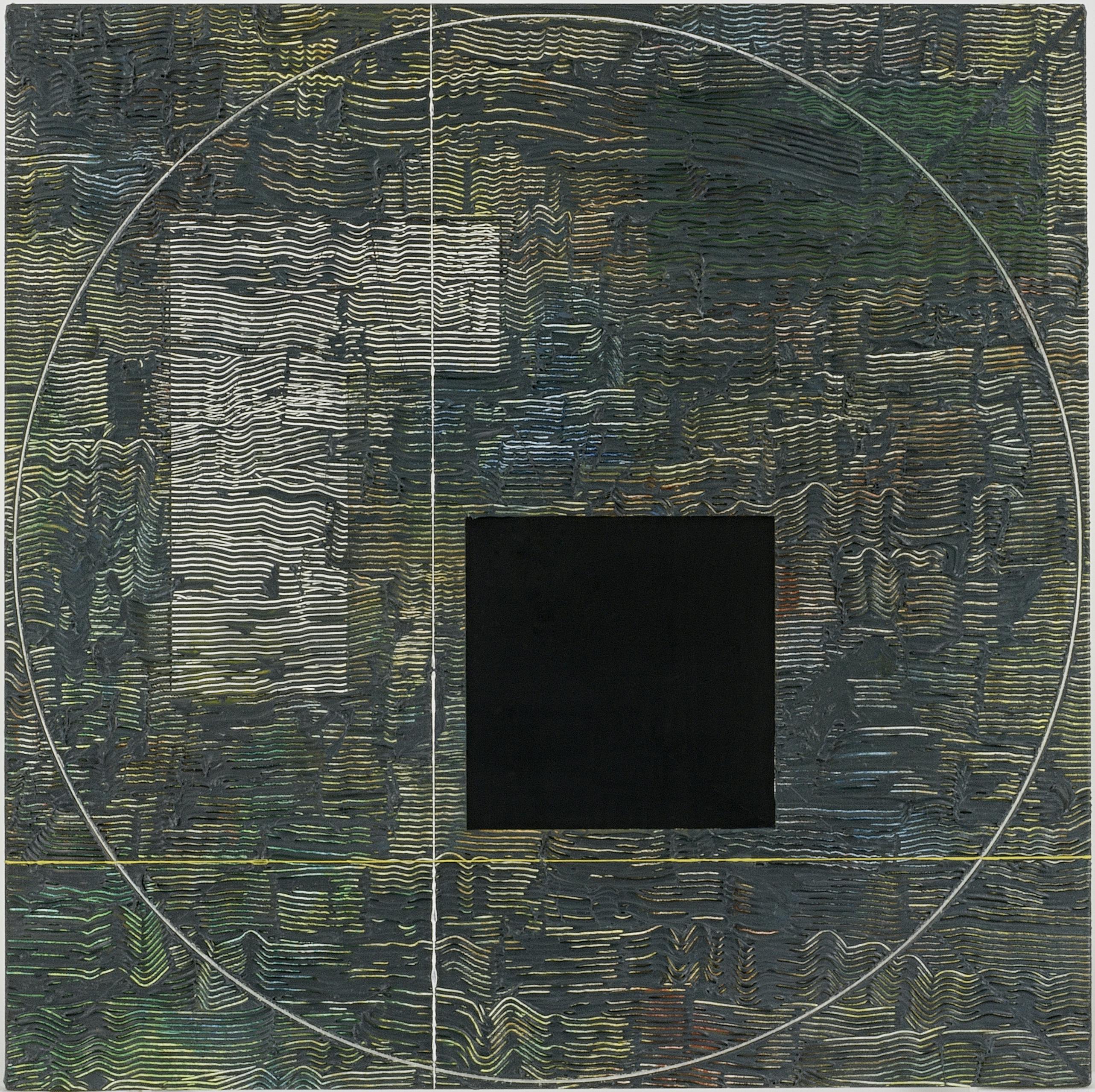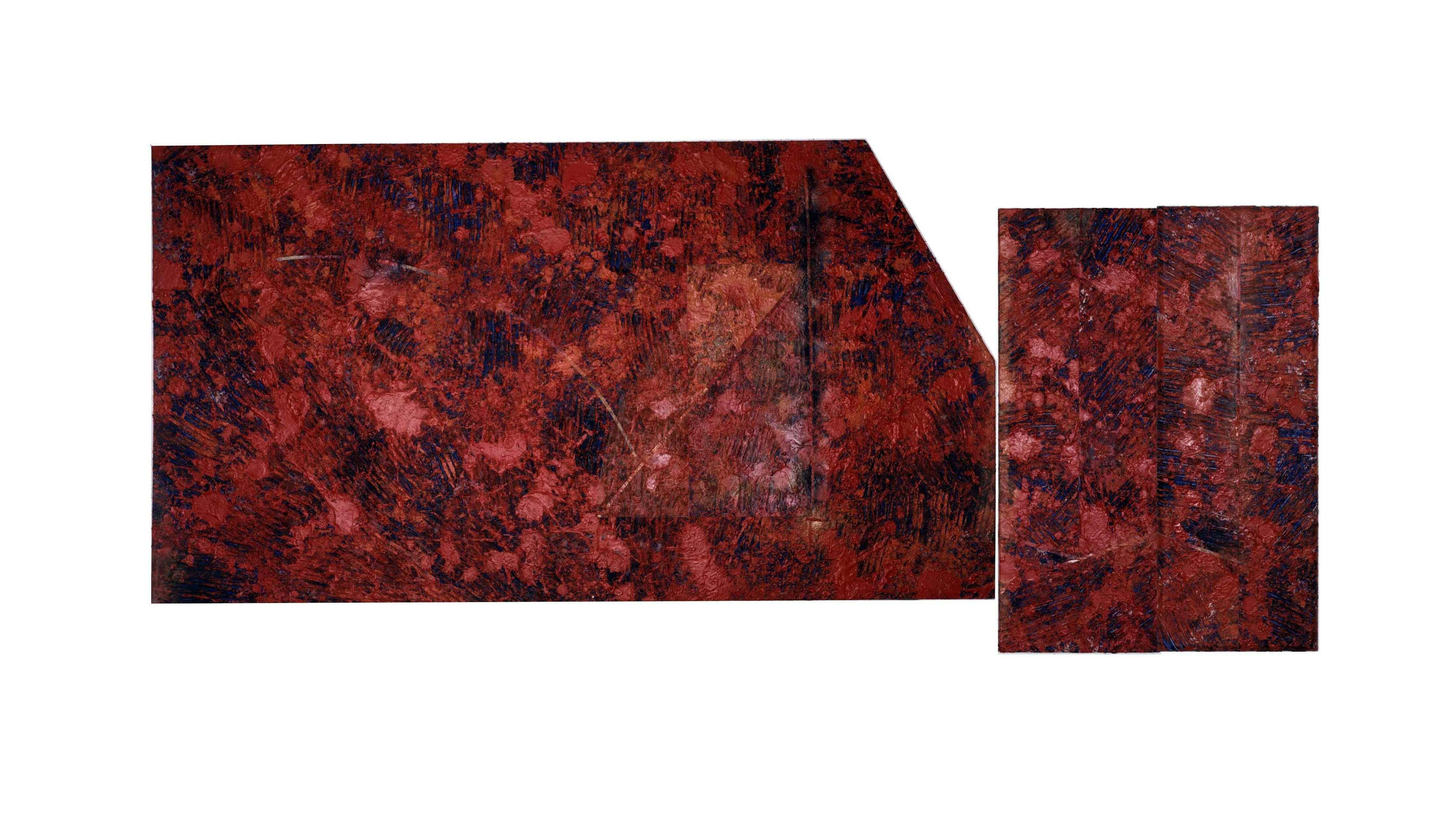Melvin E. Edwards
(b. 1937)Through large-scale painted sculptures and installations, among other media, Melvin Edwards meditates on themes of labor, violence, and justice.
Biography
Known for the formal and material nature of his works, Melvin Edwards brings together disparate found objects to offer competing narratives of creation and destruction.
He grew up in the Fifth Ward of Houston at a time when the city remained segregated. In 1944, he and his family moved to Dayton, Ohio, for his father’s work. He attended an integrated school, took art classes, and visited the Dayton Art Institute. Around the 1949 recession, the family returned to Houston, where Edwards excelled on his high school football team. Despite the possibility of a scholarship, he maintained his early interests in art and elected to move to Los Angeles to pursue his studies at Los Angeles City College, and later the University of Southern California. He initially worked in painting, but by 1963, following sculpture studies with Renzo Fenci at Otis College of Art and Design (then the Los Angeles County Art Institute), his attention shifted to sculpture. He began welding utilitarian tools and objects such as chains, spikes, and nails, creating works that physically—and titularly—embody the history of brutality against Black people.
In 1967, Edwards moved to New York. At William T. Williams’s invitation, in 1968, he joined the Smokehouse Collective, a group that collaborated with community leaders and residents in Harlem to complete large-scale public works. The following year, the Studio Museum in Harlem presented his work in X to the Fourth Power (1969) and Harlem Artists ‘69 (1969). Over the last five decades, Edwards’s distinctive sculptures, steeped in strategies of abstractionism and modernism, have emphasized the relationship between industrial materials and exploited labor; histories of race and violence; and the reverberation of historical symbols.
Edwards earned his BFA from the University of Southern California. He taught at Rutgers University from 1972 to 2002. He received awards such as a National Endowment for the Arts Visual Artists Fellowship (1971); the John Simon Guggenheim Memorial Foundation Award (1975); and a United States Artist Fellowship (2020). The Studio Museum has presented his work in exhibitions including Melvin Edwards (1978); The Decade Show: Frameworks of Identity in the 1980s (1990); and Sculpted, Etched, and Cut (2011).
Exhibitions and Events
Melvin E. Edwards
(b. 1937)Through large-scale painted sculptures and installations, among other media, Melvin Edwards meditates on themes of labor, violence, and justice.
Cotton Hangup, 1966
Biography
Known for the formal and material nature of his works, Melvin Edwards brings together disparate found objects to offer competing narratives of creation and destruction.
He grew up in the Fifth Ward of Houston at a time when the city remained segregated. In 1944, he and his family moved to Dayton, Ohio, for his father’s work. He attended an integrated school, took art classes, and visited the Dayton Art Institute. Around the 1949 recession, the family returned to Houston, where Edwards excelled on his high school football team. Despite the possibility of a scholarship, he maintained his early interests in art and elected to move to Los Angeles to pursue his studies at Los Angeles City College, and later the University of Southern California. He initially worked in painting, but by 1963, following sculpture studies with Renzo Fenci at Otis College of Art and Design (then the Los Angeles County Art Institute), his attention shifted to sculpture. He began welding utilitarian tools and objects such as chains, spikes, and nails, creating works that physically—and titularly—embody the history of brutality against Black people.
In 1967, Edwards moved to New York. At William T. Williams’s invitation, in 1968, he joined the Smokehouse Collective, a group that collaborated with community leaders and residents in Harlem to complete large-scale public works. The following year, the Studio Museum in Harlem presented his work in X to the Fourth Power (1969) and Harlem Artists ‘69 (1969). Over the last five decades, Edwards’s distinctive sculptures, steeped in strategies of abstractionism and modernism, have emphasized the relationship between industrial materials and exploited labor; histories of race and violence; and the reverberation of historical symbols.
Edwards earned his BFA from the University of Southern California. He taught at Rutgers University from 1972 to 2002. He received awards such as a National Endowment for the Arts Visual Artists Fellowship (1971); the John Simon Guggenheim Memorial Foundation Award (1975); and a United States Artist Fellowship (2020). The Studio Museum has presented his work in exhibitions including Melvin Edwards (1978); The Decade Show: Frameworks of Identity in the 1980s (1990); and Sculpted, Etched, and Cut (2011).
